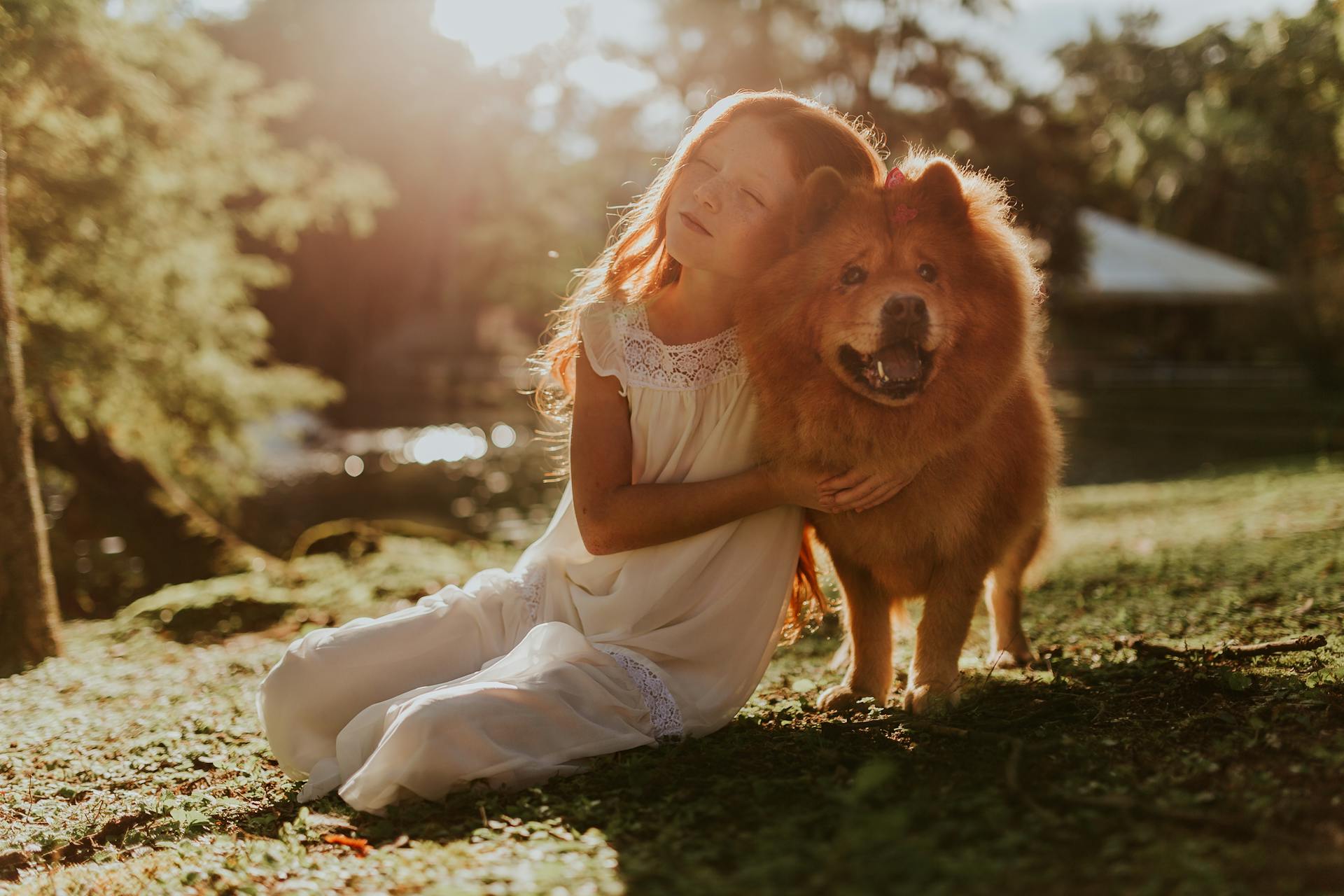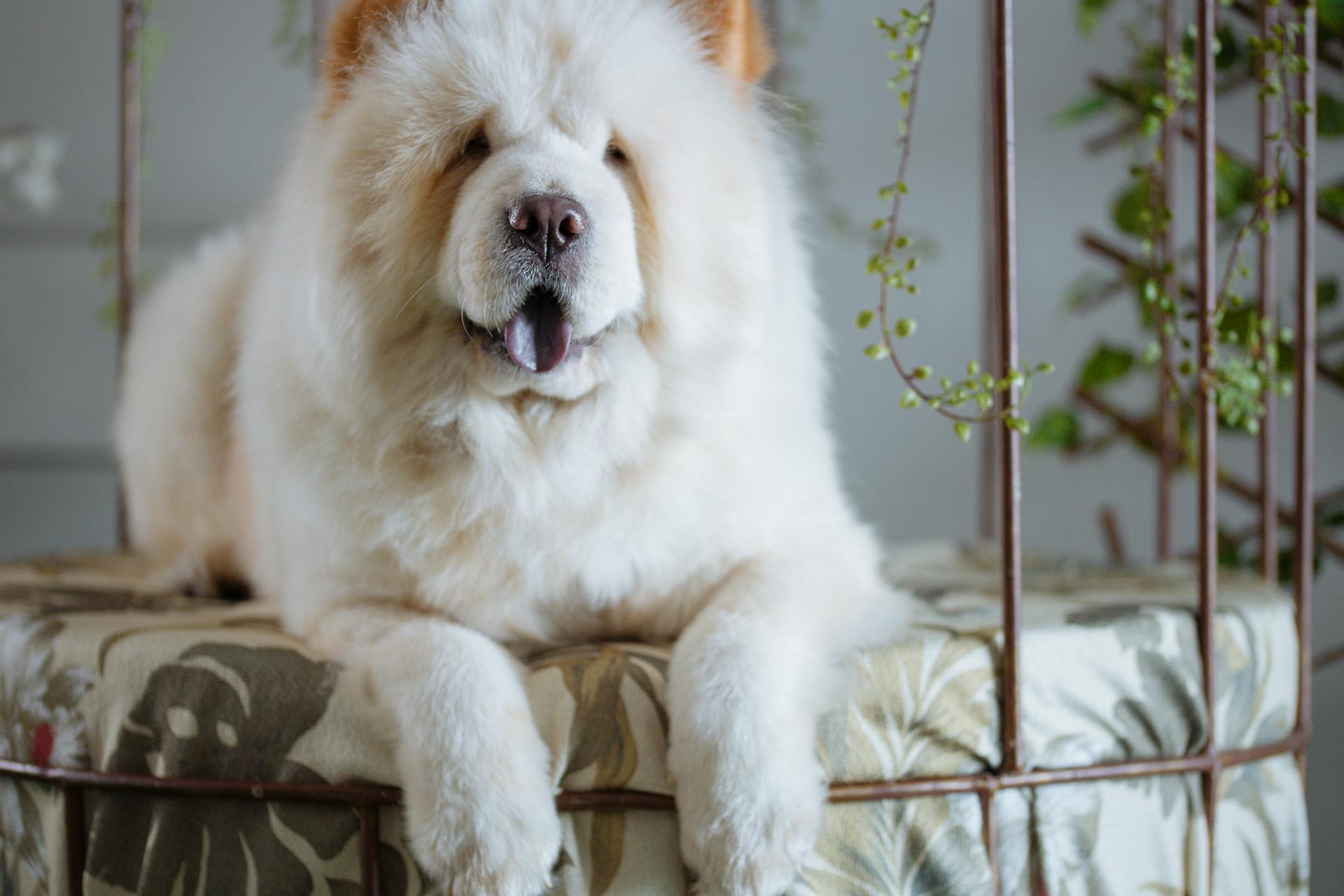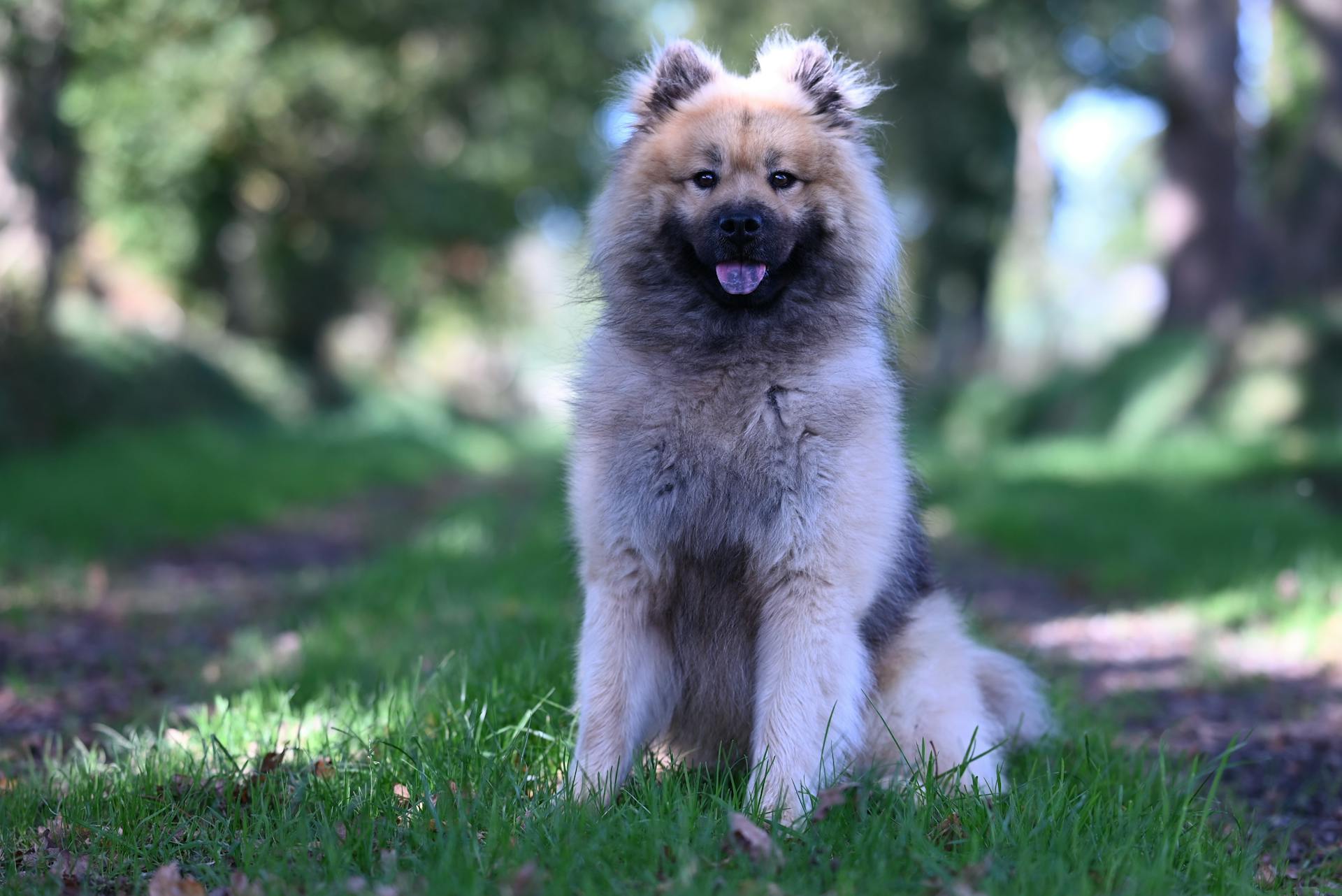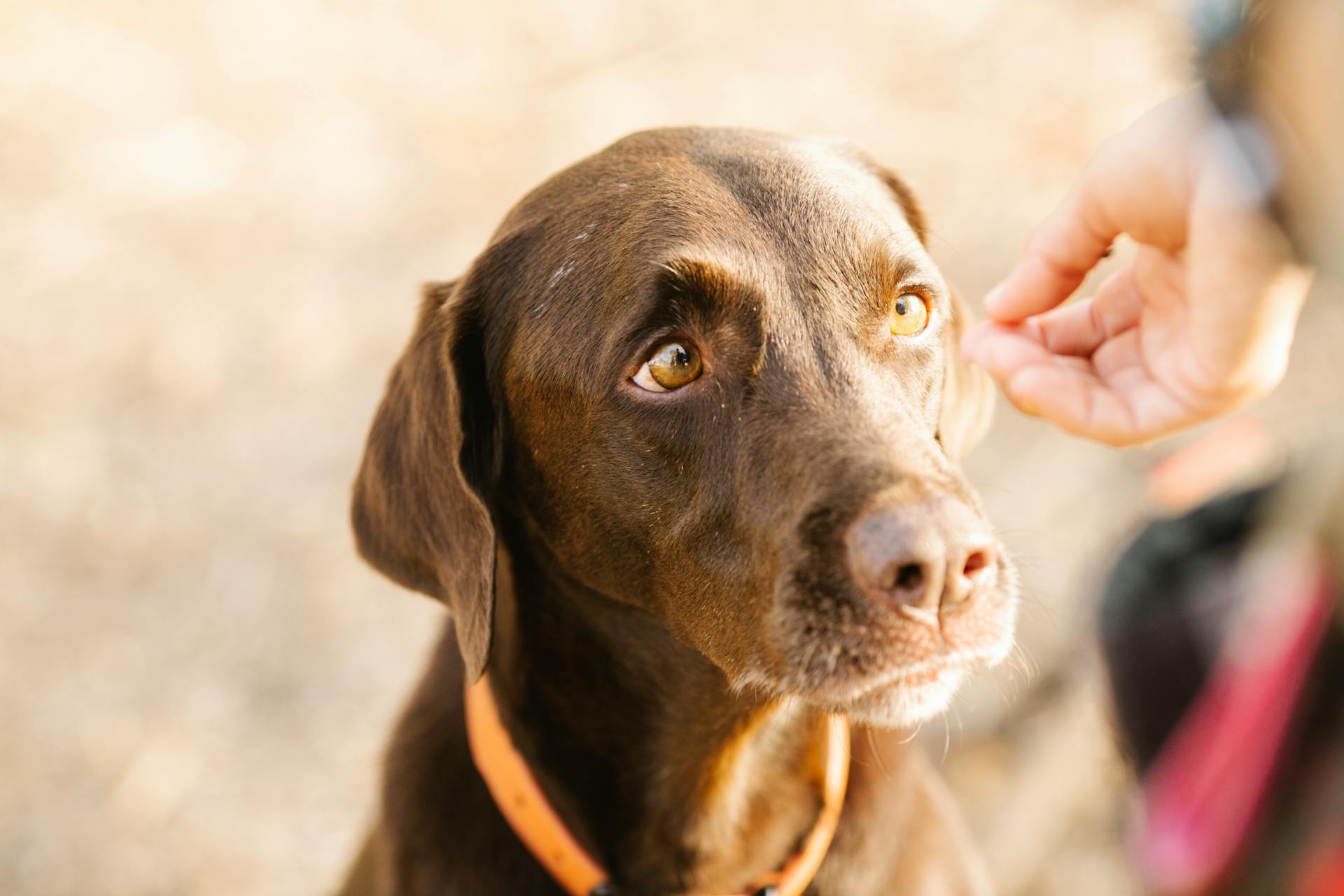
Raising a happy Chow Lab mix requires patience and dedication, but with the right approach, you can develop a lifelong friendship with your furry companion.
Chow Lab mixes are known for their loyalty and affection towards their family, often forming strong bonds with their owners. They can be wary of strangers, so early socialization is key.
Their short coats require minimal grooming, but regular nail trimming and ear cleaning are essential to prevent health issues. A 30-minute walk daily can help maintain their physical and mental health.
A balanced diet that includes a mix of protein and carbohydrates is crucial for their growth and development.
Friendship and Temperament
The friendship and temperament of a Chow Lab mix can be quite unpredictable, but one thing is for sure - they are loving and loyal companions.
They tend to be extremely energetic and friendly, often overshadowing the aloof attitude of their Chow Chow parent. However, if you're lucky, you might get a dog that's wary of strangers, making them a fine guard dog.
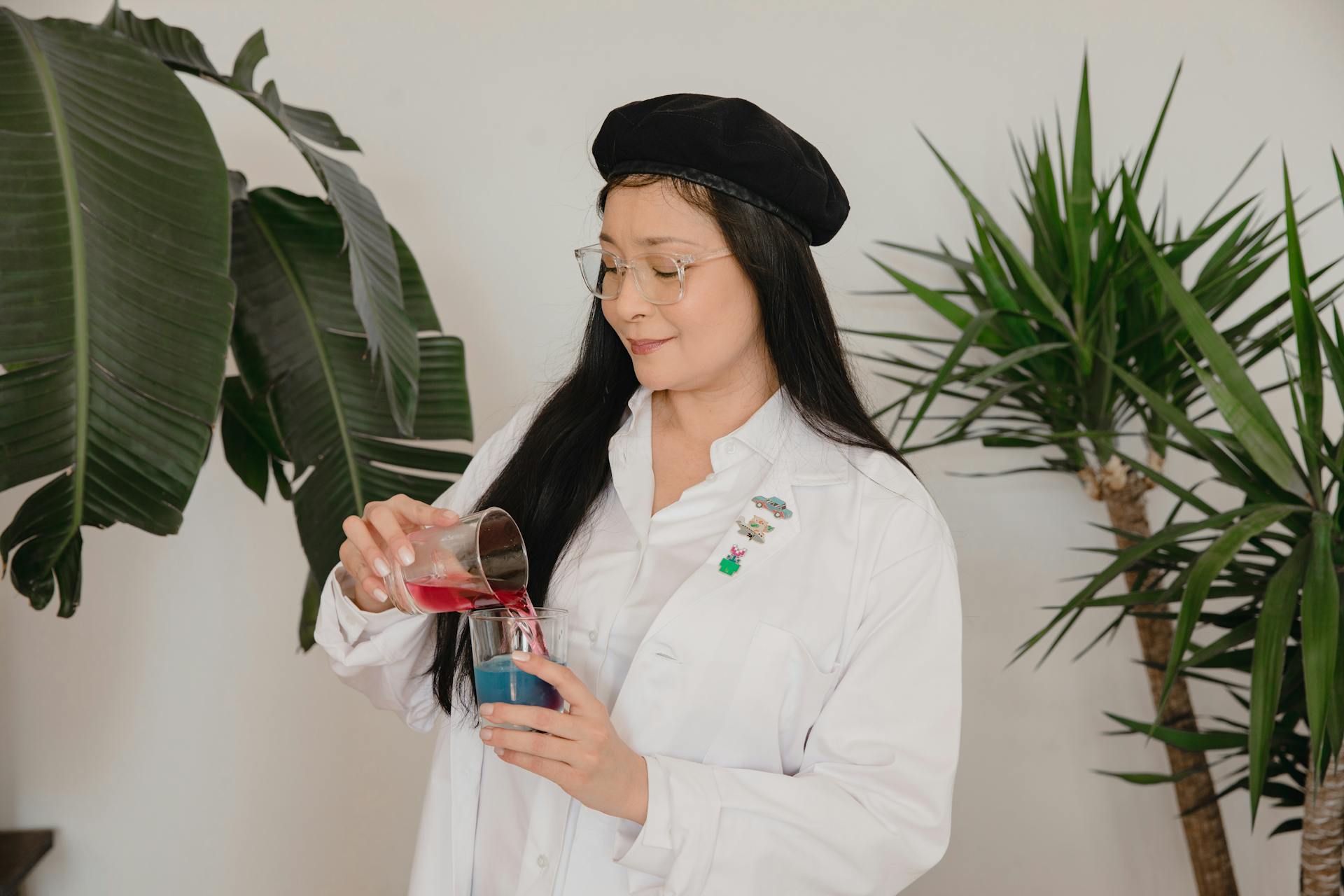
Chow Lab mixes are often calmer than Labradors and more friendly than Chow Chows, but each individual dog is different. This means you'll need to get to know your dog's unique personality and adjust your expectations accordingly.
One thing to keep in mind is that Chow Lab mixes can be resistant to training, especially if they inherit the Chow Chow's independent streak. Professional training can be a lifesaver in these cases.
These dogs are highly intelligent and eager to please, making them great candidates for complex tasks like disability support. However, they can also be quite needy, requiring constant attention and interaction.
If you're looking for a guard dog, a Chow Lab mix might be a good fit, but be aware that they can be snappy when defending their territory or family. Regular exercise and training can help mitigate this behavior.
Chow Lab mixes are generally good with kids and other pets, but they do need space to live in and regular outings, especially if they're apartment dogs. They love to play and expect their owners to join in on the fun.
Overall, the friendship and temperament of a Chow Lab mix are shaped by their unique blend of Labrador and Chow Chow traits. With patience, love, and proper training, you can develop a strong and loving bond with your furry companion.
Health and Care
Chabrador owners should prioritize regular veterinary checkups to detect any health concerns early, as your vet can help you develop a care routine that will keep your dog healthy.
Chabradors are happy and healthy with moderate amounts of exercise, aiming for about 60 minutes of activity time each day.
Pay special attention to your Chabrador's ears, keeping them dry and clean to avoid infection. Ask your vet for guidance on how best to care for this breed's ears.
Chabradors can inherit health risks, including elbow and hip dysplasia, which can be reduced by limiting exercise as a puppy, and issues with the eyes, such as entropion, glaucoma, and cataracts.
Growing Chabradors should be limited to five minutes of exercise per day per month of their life to prevent joint problems later on.
Health
Chabradors are generally considered to be healthy dogs and may have fewer health problems than both of their parent breeds. They have a healthy lifespan for dogs of their size of between nine and 12 years.
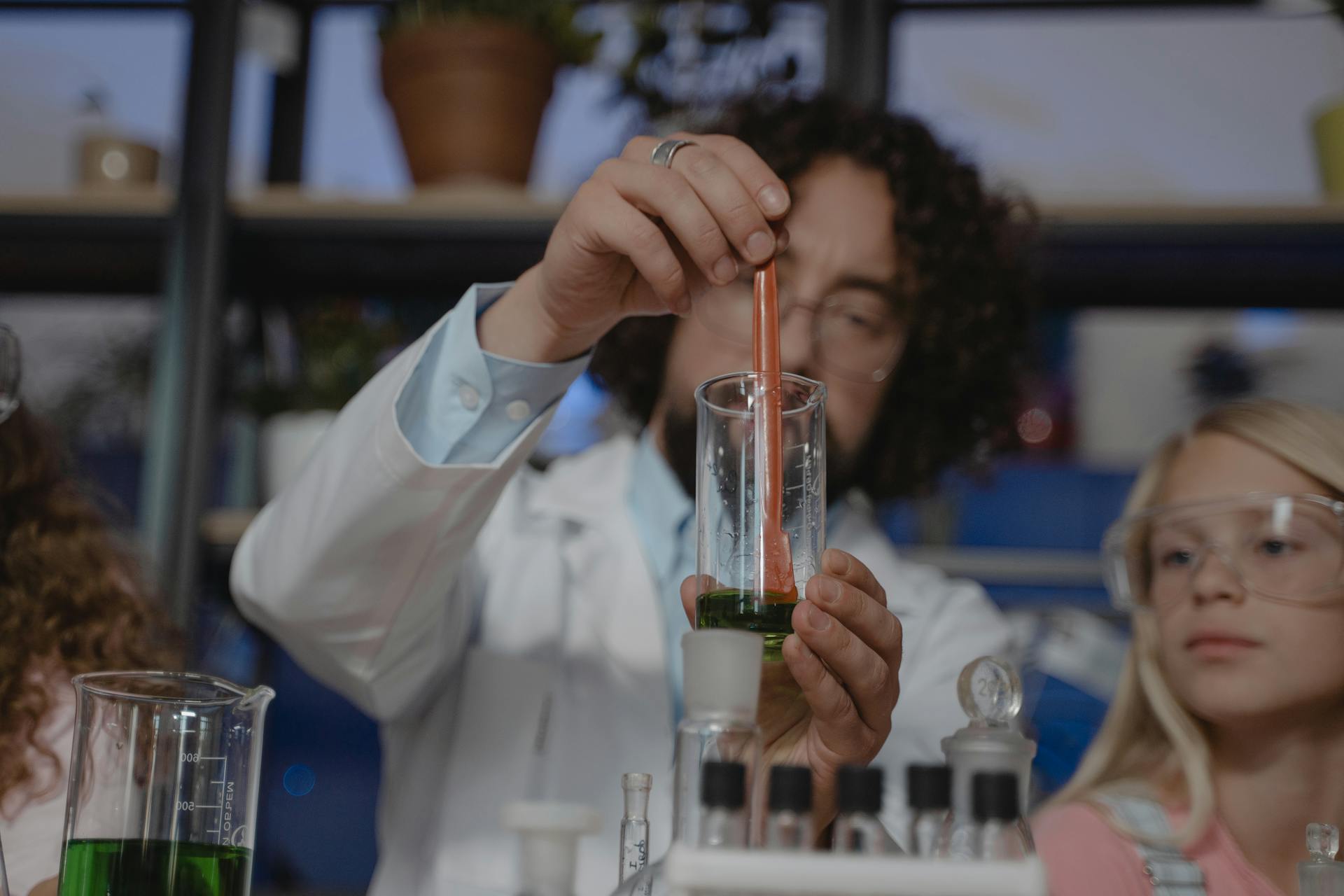
Regular veterinary checkups are essential to detect any health concerns early. Your vet can help you develop a care routine that will keep your dog healthy.
It's vital to keep your Chabrador's ears dry and clean to prevent infection. Ask your vet for guidance on how best to care for this breed's ears.
Moderate amounts of exercise are sufficient for Chabradors, about 60 minutes of activity time each day. However, it's essential to limit exercise for growing puppies, as excessive exercise can lead to joint issues later in life.
Growing dogs should be limited to five minutes of exercise per day per month of their life. So, a four-month-old puppy only needs about 20 minutes of exercise each day.
Chabradors may inherit various health risks from their parent breeds, including elbow and hip dysplasia, eye diseases, and skin issues. Watch for these issues to identify and treat them early.
Entropion, a painful condition where the eyelashes grow inwards, can occur in puppies. It's essential to monitor your puppy's eye health closely.
Obesity is also a risk for Chabradors, so it's crucial to maintain a healthy weight through a balanced diet and regular exercise.
Curious to learn more? Check out: Life Expectancy of a Lab Mix
Diet/Feeding
A Chabrador's diet is crucial for its overall health and well-being. They need to stick to a healthy diet to avoid weight gain and associated health problems.
As with all dogs, a Chabrador's dietary needs change throughout its life stages, from puppyhood to adulthood and into its senior years. You should ask your veterinarian for recommendations about your Chabrador's diet.
A Chabrador's special thick coat means they don't thrive in hotter and more humid climates. They might become perfect outdoor walking companions for you in places with strong winters.
You should provide your dog with foods normal to large dogs like its parents. The quantity should also be the same, depending on the amount of energy your big doggie possesses.
Don't compromise on the quality of your dog's food, pick up foods recommended for dogs of such a size and levels of energy.
Not Suitable for Families with Small Children
If you have small kids, this breed may not be the best fit.
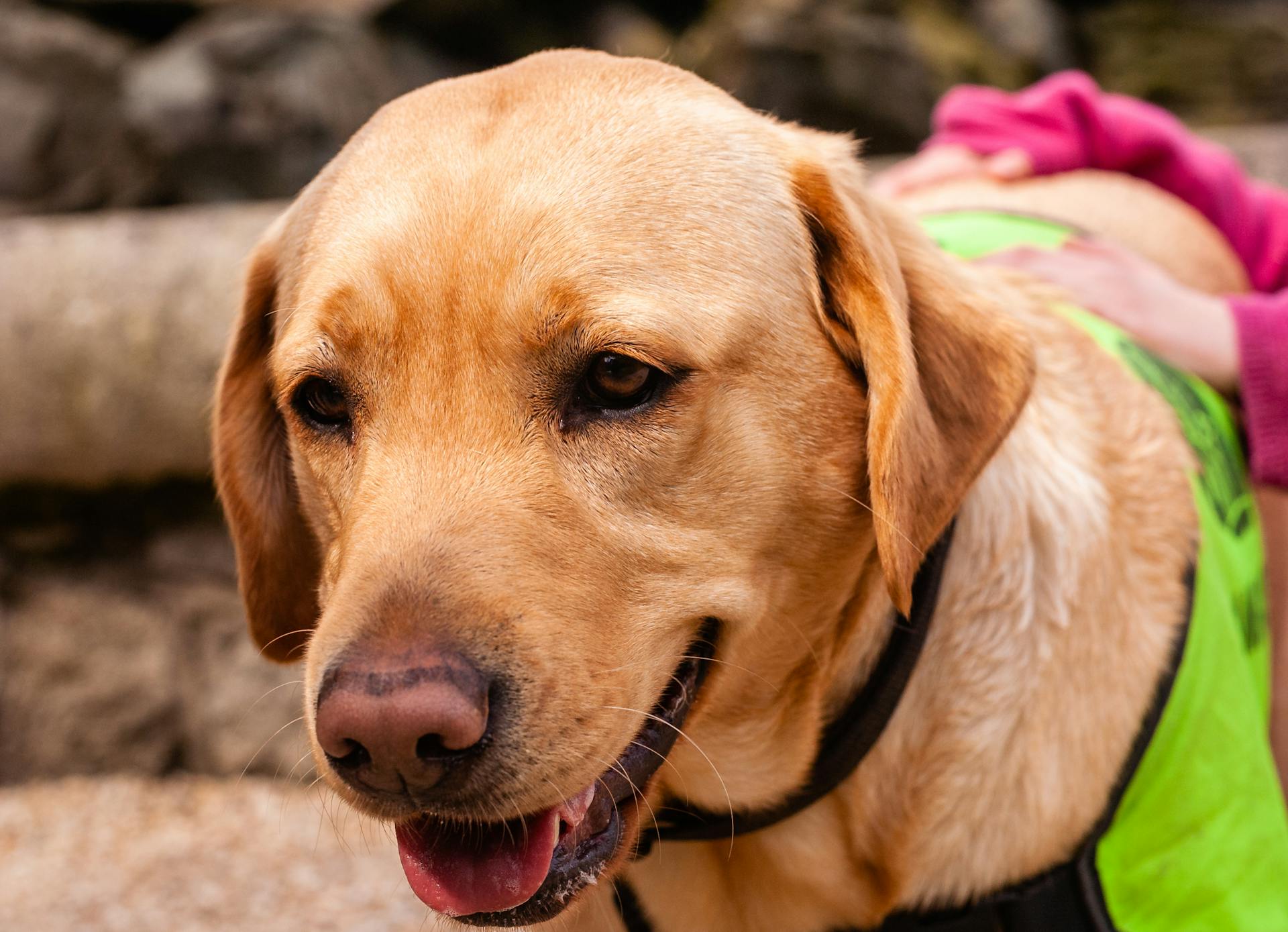
Chabrador owners often report that their dogs are very protective of small children.
However, the Chow Chow side of the mix can become aggressive when others don't respect her territory, making this a potential issue for families with young kids.
You'll want to ensure your kids are old enough to understand and accept this dog's temperament before bringing her home.
Physical Characteristics
The Chow Lab mix is a unique breed, and their physical characteristics reflect their mixed heritage. They are usually medium to large-sized dogs, ranging in height from 18 to 24 inches.
Their coats are a combination of the thick, furry coat of a Chow Chow and the high-shedding double coat of a Labrador. They will shed a lot throughout the year, so be prepared for regular brushing.
Their coats can be a variety of solid colors, including light tan, black, gold, cream, blue, or reddish-brown. Mixed coloring is possible but less common.
Both Labradors and Chow Chows have a thick neck and a fairly large and long muzzle, which are characteristics that their mixed-breed puppies will likely inherit.
Consider reading: Chow Dog Mixed with Pitbull
Care and Maintenance
Regular veterinary checkups are essential for a healthy Chabrador, so schedule visits with your vet to detect any potential health concerns early.
A moderate amount of exercise is perfect for Chabradors, aiming for about 60 minutes of activity time each day should keep them happy and healthy.
Interactive toys and variety in playtime are key to satisfying their intelligence, so get creative with playtime and keep things upbeat.
To keep your Chabrador's ears healthy, pay special attention to keeping them dry and clean, and ask your vet for guidance on how to do this.
Trimming their nails is also important, as long nails can click loudly against the floor and cause discomfort.
Brushing their coat regularly is essential, especially if they have a thick, fluffy coat that's prone to matting.
Bathing your Chabrador should be done every one or two months, depending on how dirty they get, and always use a dog-specific shampoo.
Regular grooming can help prevent matting and shedding, aiming for weekly grooming sessions to brush off dead hairs.
Care
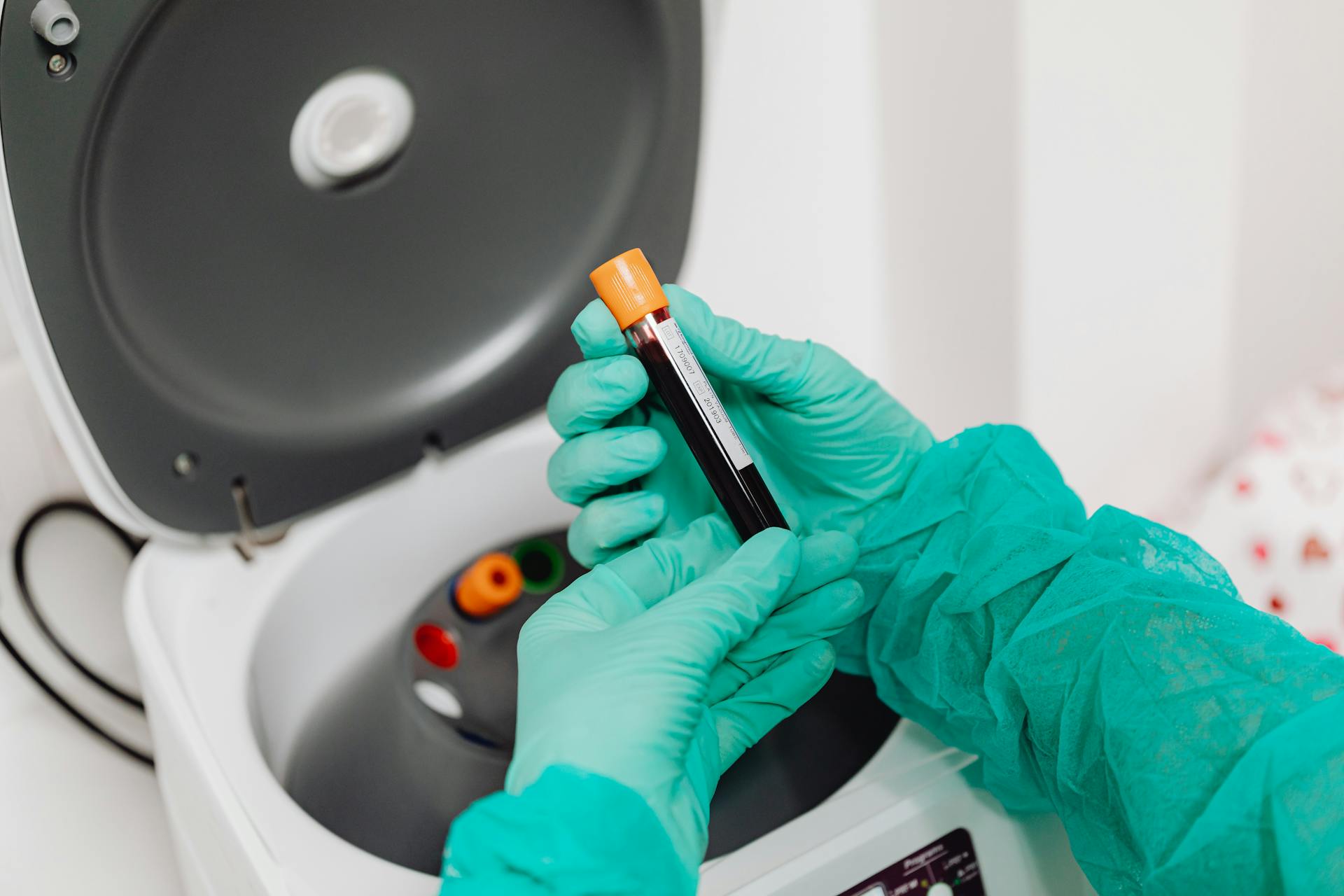
Regular veterinary checkups are crucial to detect any health concerns early in your Chabrador. Your vet can help you develop a care routine that will keep your dog healthy.
Chabradors are happy and healthy with moderate amounts of exercise, aiming for about 60 minutes of activity time each day is a good starting point. Be prepared to keep things upbeat, as Chabradors can be very enthusiastic walking and playtime partners.
Satisfying your Chabrador's innate intelligence means providing interactive toys and variety in playtime. This will keep your dog engaged and stimulated.
Pay special attention to your Chabrador's ears, keeping them dry and clean is vital to prevent infection. Ask your vet for guidance on how to care for this breed's ears.
Trimming your Chabrador's nails is essential, but be careful not to wait too long – they should not click loudly against the floor. Your groomer can help with this.
Bathing your Chabrador every one to two months is usually sufficient, depending on how dirty they get. Use a shampoo specifically designed for dogs, and avoid using human shampoos.
Grooming
Grooming is essential for keeping your Chabrador clean and healthy, and it's not as complicated as you might think. You'll need to brush their dense, double-layered coat at least twice a week to prevent mats and keep things clean.
The frequency of grooming depends on the type of coat your Chabrador has. If they have a Labrador-like coat, they'll require less grooming, but still need regular brushing. If their coat is more like the Chow Chow's, you'll need to be more diligent to prevent matting.
You can bathe your Chabrador every one to two months, depending on how dirty they get. Use a shampoo specifically designed for dogs, and don't forget to trim their nails with a dog nail trimmer – human ones can be too harsh.
Regular grooming will also help to reduce shedding, which is a good thing, especially during seasonal changes. You can brush off dead hairs weekly to keep your Chabrador looking their best.
Exercise and Training
Exercise is crucial for a Chow Lab Mix, with daily long walks and ideally a large garden to burn off excess energy. They love to run off the lead and play with other dogs.
You'll need to ensure they have at least an hour of exercise a day, which can be split into two sessions to prevent overheating. Swimming is a great alternative form of exercise, as both Labradors and Chow Chows love it.
A Chow Lab Mix will keep you busy, so be ready to dedicate at least two hours a day to exercise and grooming. They'll need daily walks, short play sessions, and mental stimulation as adults.
Training is also vital, as they tend to go astray easily if not properly educated. Socialization, obedience, and housebreaking trainings should start when your dog is still a puppy, and professional trainers can be helpful if needed.
These dogs are attentive and devoted, so they shouldn't take too long to learn good behavior and mannerisms.
Exercise
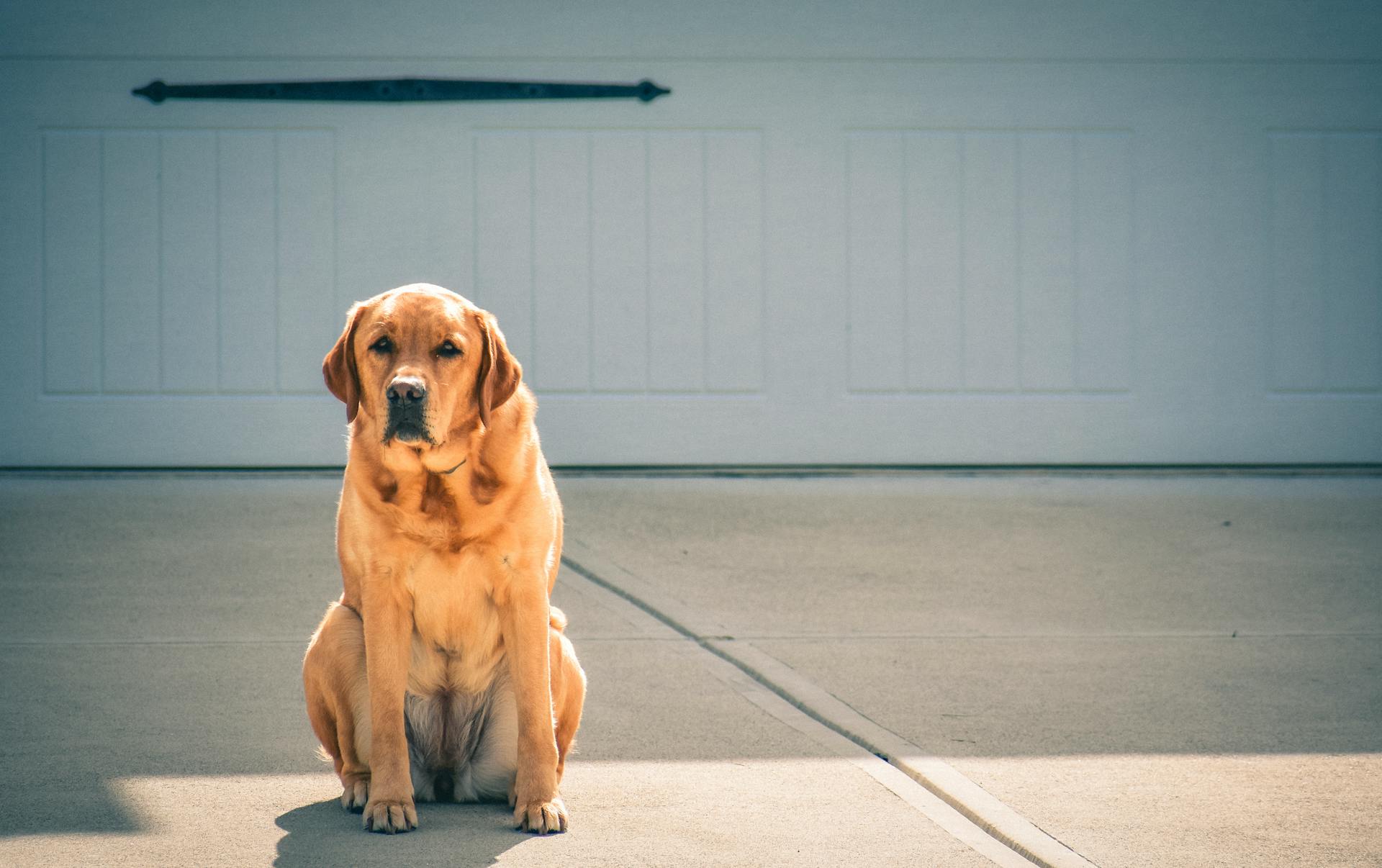
A Chabrador needs daily, long walks and ideally a place to burn off excess energy, such as a large garden. They love to run off the lead and play with other dogs, which will keep them both mentally and physically stimulated.
They will need about an hour of exercise a day, which can be split into two sessions to prevent overheating. Both breeds love swimming, so this can be a great alternate form of exercise for a Chow Lab mix.
They will also love running in a leash-free dog park if they are properly socialized and know how to behave around other dogs. A good rule of thumb is to ensure they have an outdoor place to call their own and burn off energy.
They might end up being destructive and display independent behavior if they don't get enough exercise. Participate in different games like retrieving and fetching to keep them engaged and happy.
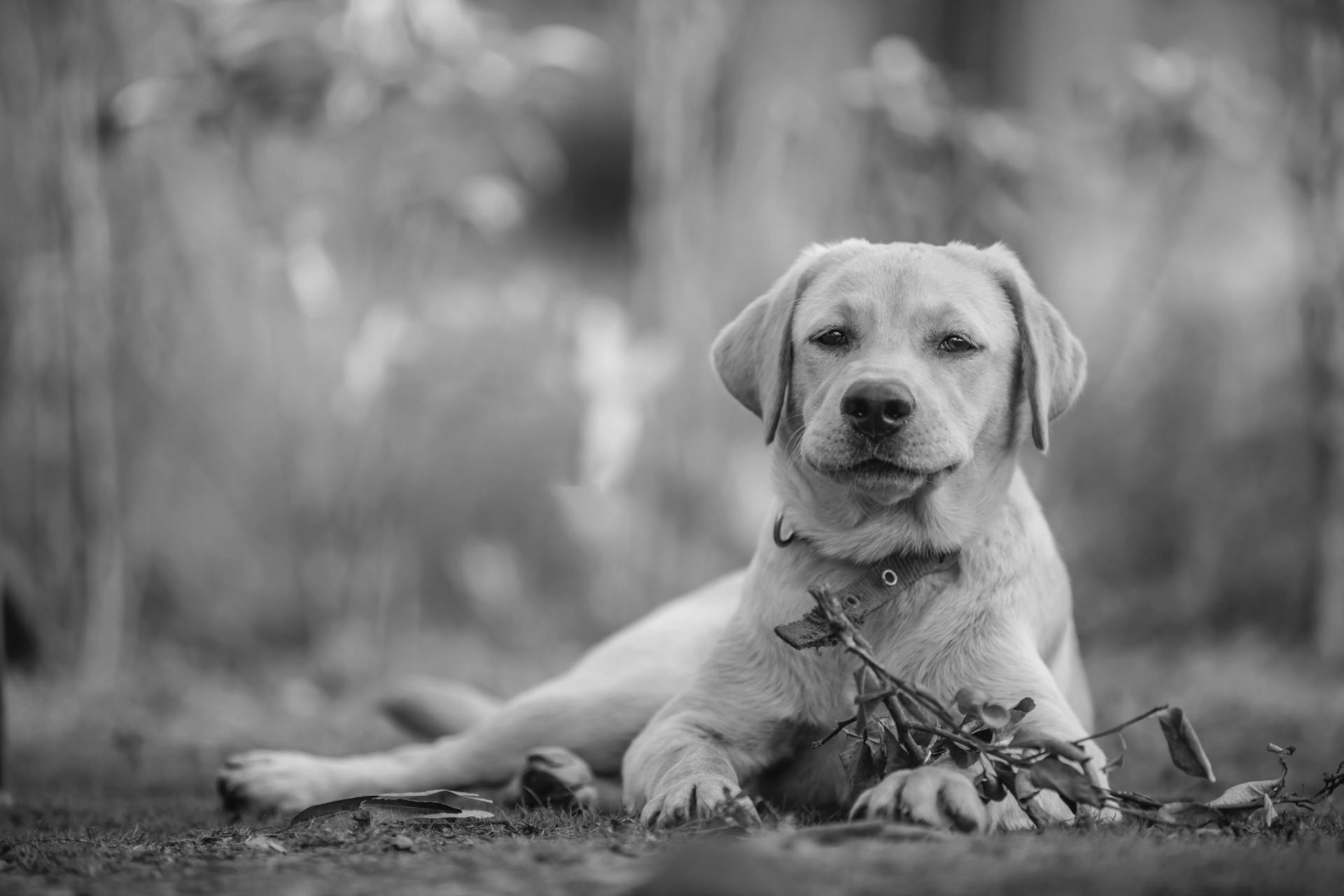
As a Chabrador owner, you should be ready to dedicate at least two hours a day to exercise and grooming. This includes daily walks, short play sessions, and mental stimulation.
They need their space to move and run, so if you live in a small apartment, make sure they spend a couple of hours outside every day. A yard is ideal, but a dog field or regular trips to a nearby lake can also suffice.
Training
Training a Chabrador requires patience and persistence, as they can pick up their independent and stubborn nature from their Chow Chow parent.
You need to socialise your Chabrador from an early age, not just with other dogs, but also with humans, to help bring out their innate friendliness.
Training should be personalized to your dog's needs, and you know your pooch better than anyone, so apply this advice to your individual situation.
The key to successful training is to be firm, persistent, and fair, and to reward good behaviour with treats, fuss, and a clicker.
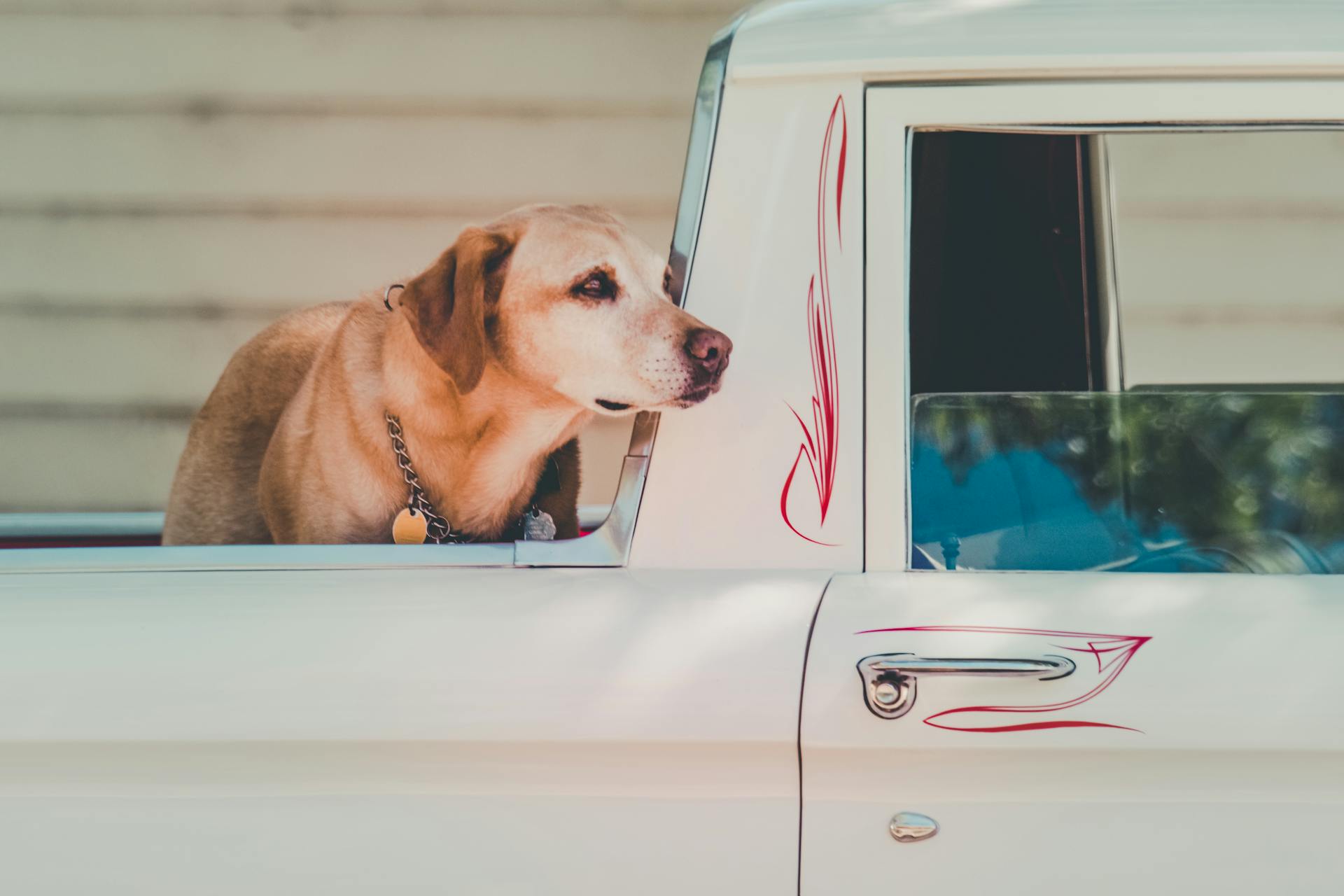
Begin socialization, obedience, and housebreaking trainings when your dog is still a puppy, soon after adoption, to make your job easier.
These dogs are attentive and devoted, and shouldn't take too long to practice and profess what you teach them, but lack of proper training can enhance their independent behaviour.
You should avoid shouting, smacking, and confrontational tools like shock collars, as these can lead to issues with aggression.
Proper training will ease your job and help your Chabrador become a well-behaved and well-mannered companion.
Frequently Asked Questions
Are retriever Lab mix good dogs?
Yes, Labrador cross golden retriever mixes are known for being excellent companions, with a steady temperament and strong work ethic. They make fantastic family pets for those who are willing to provide the necessary training and attention.
How big does a Lab retriever mix get?
Labrador Retriever mixes typically stand between 21.5 to 24.5 inches tall and weigh between 55 to 80 pounds, depending on their sex and individual characteristics. Their size can vary, but they generally fall within the range of a standard Labrador Retriever.
What is the personality of a chow retriever mix?
A Chow Retriever mix is a loyal and protective hybrid with a reserved nature. Early socialization is key to helping them get along with others.
Are chow lab mix good dogs?
Chow Lab mixes are known for their friendly and loyal nature, making them a great choice for families and first-time dog owners. With proper care and attention, they can thrive as loving and well-behaved companions
What is a black Lab mix with chow chow?
A black Lab mix with Chow Chow is known as a Chabrador, a friendly and loyal mixed breed dog that combines the best qualities of both parent breeds. This unique mix is also sometimes referred to as a Lab Chow or Chowbrador.
Featured Images: pexels.com
